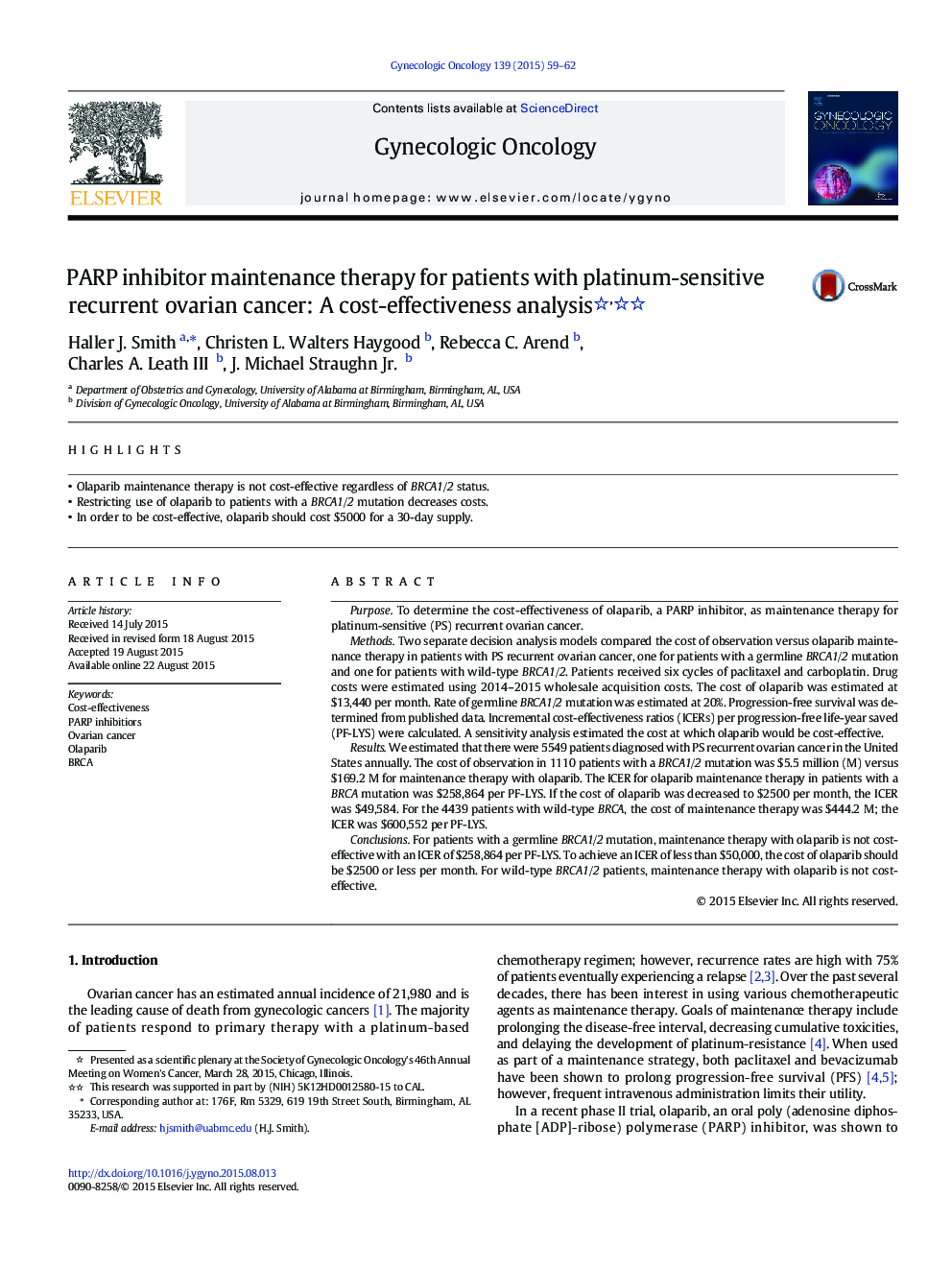| Article ID | Journal | Published Year | Pages | File Type |
|---|---|---|---|---|
| 3942546 | Gynecologic Oncology | 2015 | 4 Pages |
•Olaparib maintenance therapy is not cost-effective regardless of BRCA1/2 status.•Restricting use of olaparib to patients with a BRCA1/2 mutation decreases costs.•In order to be cost-effective, olaparib should cost $5000 for a 30-day supply.
PurposeTo determine the cost-effectiveness of olaparib, a PARP inhibitor, as maintenance therapy for platinum-sensitive (PS) recurrent ovarian cancer.MethodsTwo separate decision analysis models compared the cost of observation versus olaparib maintenance therapy in patients with PS recurrent ovarian cancer, one for patients with a germline BRCA1/2 mutation and one for patients with wild-type BRCA1/2. Patients received six cycles of paclitaxel and carboplatin. Drug costs were estimated using 2014–2015 wholesale acquisition costs. The cost of olaparib was estimated at $13,440 per month. Rate of germline BRCA1/2 mutation was estimated at 20%. Progression-free survival was determined from published data. Incremental cost-effectiveness ratios (ICERs) per progression-free life-year saved (PF-LYS) were calculated. A sensitivity analysis estimated the cost at which olaparib would be cost-effective.ResultsWe estimated that there were 5549 patients diagnosed with PS recurrent ovarian cancer in the United States annually. The cost of observation in 1110 patients with a BRCA1/2 mutation was $5.5 million (M) versus $169.2 M for maintenance therapy with olaparib. The ICER for olaparib maintenance therapy in patients with a BRCA mutation was $258,864 per PF-LYS. If the cost of olaparib was decreased to $2500 per month, the ICER was $49,584. For the 4439 patients with wild-type BRCA, the cost of maintenance therapy was $444.2 M; the ICER was $600,552 per PF-LYS.ConclusionsFor patients with a germline BRCA1/2 mutation, maintenance therapy with olaparib is not cost-effective with an ICER of $258,864 per PF-LYS. To achieve an ICER of less than $50,000, the cost of olaparib should be $2500 or less per month. For wild-type BRCA1/2 patients, maintenance therapy with olaparib is not cost-effective.
